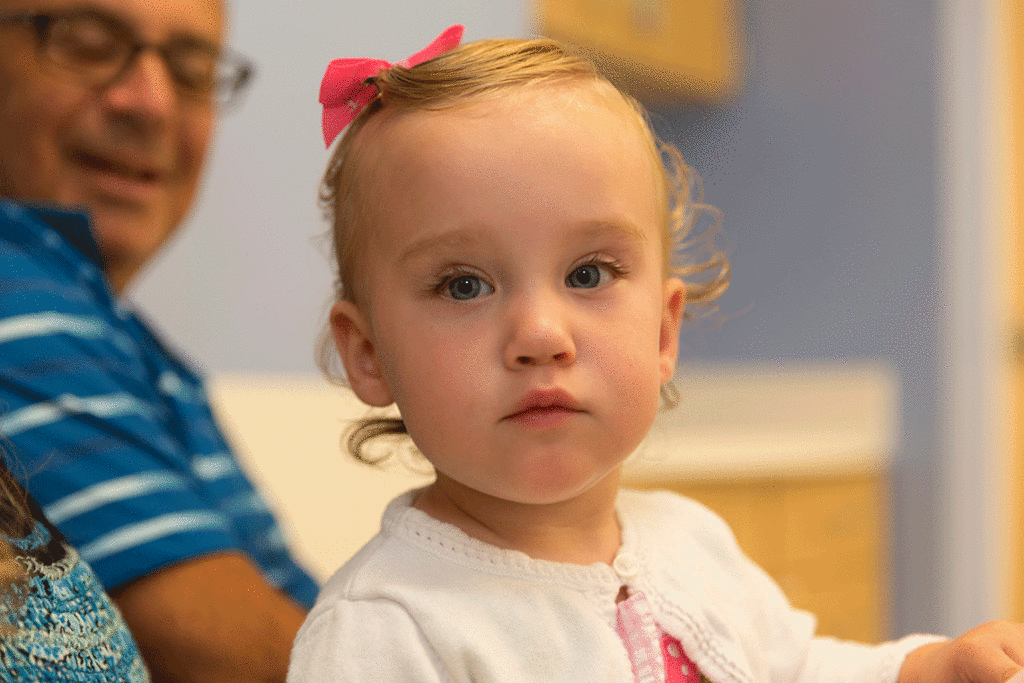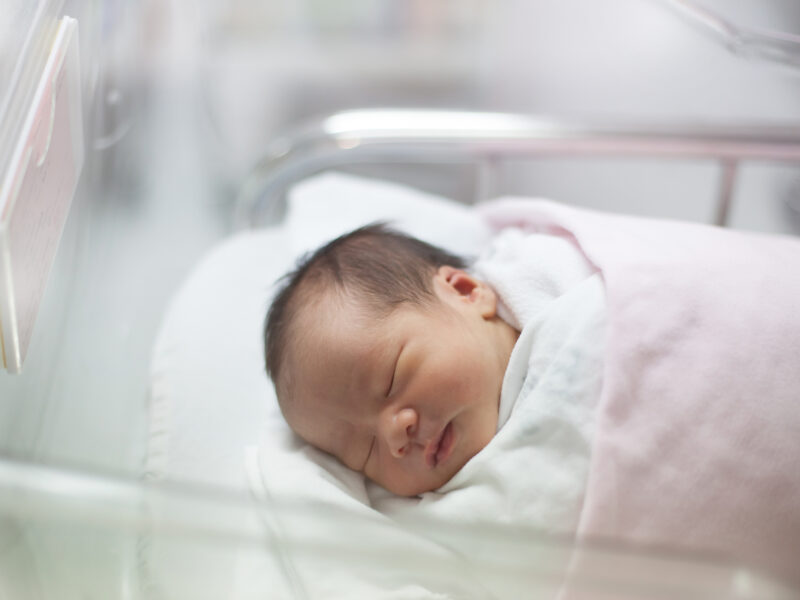Novel Intervention Helps Infants With Cerebral Palsy Develop Arm and Hand Function
Novel Intervention Helps Infants With Cerebral Palsy Develop Arm and Hand Function https://pediatricsnationwide.org/wp-content/uploads/2017/09/062717BS0126G-Taryn-for-web-1024x683.gif 1024 683 Abbie Miller Abbie Miller https://pediatricsnationwide.org/wp-content/uploads/2023/05/051023BT016-Abbie-Crop.jpg- August 12, 2020
- Abbie Miller

A new NIH-funded randomized controlled trial shows that an intervention combining a patented soft restraint harness, therapist coaching and parent training increases reach smoothness, fine motor skills and tactile sensation in the more-affected upper extremity. For the first time in infants with CP under 2, a clinical trial of this type of intervention was shown to also be safe for the tactile processing of the restrained extremity, and for the development of other motor skills.
Cerebral palsy (CP) is characterized by sensorimotor impairments that are the result of events that harm neural development during the perinatal period. Sometimes, this manifests as an upper extremity impairment that affects one arm more than the other.
A recent study published in Brain Topography reports the results of the largest U.S. randomized controlled trial aimed to determine the safety and efficacy of a parent-administered multimodal therapy in children with CP and asymmetrical upper extremity impairments.
The intervention involved the use of a loose, soft restraint harness (C-Mitt), designed for the less affected arm to encourage the use of the more affected arm. The C-Mitt allows sensory feedback, full arm range of motion and use of the hand as an assist or for gross motor skills such as crawling.
Wearing the soft restraint harness encouraged the use of the more affected arm, along with the use of “sticky mittens,” sensory-motor reinforcement exercises and bimanual play. Therapists taught parents how to perform the therapies and increased the challenge every week. An activity-monitor measured restraint wear time.
“The developing sensory system is sensitive to long periods of neural input deprivation, making it imperative to study the safety of interventions leveraging neuroplasticity. This is why we were so pleased that the NIH supported a high-tech mechanistic approach to studying a low-tech, inexpensive therapy,” says Nathalie Maitre, MD, PhD, lead author of the publication and director of the NICU Follow-up Program at Nationwide Children’s Hospital.
Progress was evaluated using motion-capture (3D-kinematic) measures of reach and high-density EEG measures of somatosensory processing in response to light touch in addition to standard motor function tests.
“It has been a privilege to help empower families in improving their children’s outcomes,” says Dr. Maitre. “No matter what challenges these families faced, they were able to consistently and effectively deliver an intervention that improved their infant’s or toddler’s hand use. We are now studying increasing long-term effects in these children until the age of three.”
This trial is one of several conducted by the Baby Brain Optimization Project (BBOP), a team that includes investigators in specialties from neonatology to neurology, clinical therapies, anesthesia and surgery, all working together on patient-based neuroscience research.
“The BBOP team focuses on understanding and improving neurodevelopment for children with neural insults in early life,” says Dr. Maitre. “Our success is bolstered by a supportive hospital environment, incredible research institute, and a dedicated team of clinicians, scientists, engineers, therapists, international collaborators and most of all, the families who participate in our research.”
Reference:
Maitre NL, Jeanvoine A, Yoder PJ, Key AP, Slaughter JC, Carey H, Needham A, Murray MM, Heathcock J. The BBOP group. Kinematic and somatosensory gains in infants with cerebral palsy after a multicomponent upper-extremity intervention: a randomized controlled trial. Brain Topography. August 2020. [Epub online]
Photo credit: Nationwide Children’s (Taryn, shown in the picture was a participant in the study).
About the author
Abbie (Roth) Miller, MWC, is a passionate communicator of science. As the manager, medical and science content, at Nationwide Children’s Hospital, she shares stories about innovative research and discovery with audiences ranging from parents to preeminent researchers and leaders. Before coming to Nationwide Children’s, Abbie used her communication skills to engage audiences with a wide variety of science topics. She is a Medical Writer Certified®, credentialed by the American Medical Writers Association.
-
Abbie Millerhttps://pediatricsnationwide.org/author/abbie-miller/
-
Abbie Millerhttps://pediatricsnationwide.org/author/abbie-miller/
-
Abbie Millerhttps://pediatricsnationwide.org/author/abbie-miller/
-
Abbie Millerhttps://pediatricsnationwide.org/author/abbie-miller/
- Post Tags:
- Cerebral Palsy
- Neonatology
- NICU Follow-up
- Posted In:
- Clinical Updates
- In Brief
- Research







